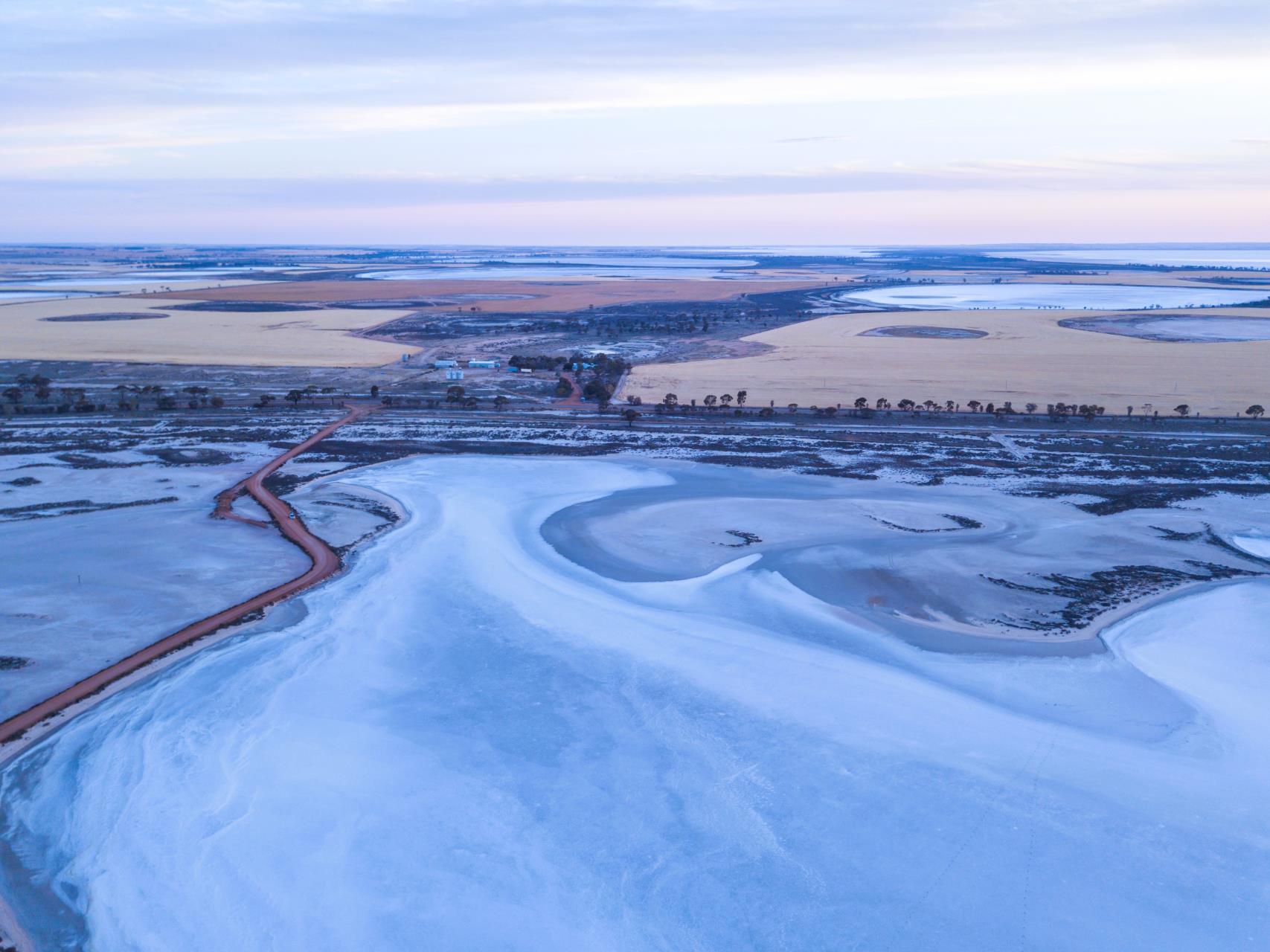Lake Grace

LAKE GRACE is an attractive Wheatbelt town with a self-contained community of 548 people. The town is the commercial centre of the shire and the council offices are based there. Visit our beautiful swimming pool in the summer months, sample wines at a local vineyard, or stock up on supplies in town.
Land was first selected by the Lands Department in 1907 and the town was named for the two large interconnected salt lakes 8 kms west of the town. The belts of heavy timber were eagerly sought because of their fertility and the reliable climate for wheat growing. In 1916 the railway line reached Lake Grace, providing a vital link for food and general supplies, and a regular mail service.
Whilst in the area, stroll over to the water feature and colourful mosaics in the gardens of the Medical Centre. If you are in need of some inspiration have a look at our Historical Mural in the centre of town. The mural features women who in some way were pioneers of the district, from European settlement to the present. Panoramic views of our immense lake system can be seen from the Lake Grace Lookout, 12 kms west of town. Lake Grace is 50.5 kms long and up to 7.25 kms wide. It has been estimated that 19 million tonnes of gypsum lie under the salty surface.
Lake Grace Lions Park at the eastern entry to town and Apex Park on the western outskirts are both ideal for rest breaks and picnics. There are also a number of small parks within the townsite.
Don’t miss visiting one of two remaining Australian Inland Mission Hospitals. The Lake Grace Australian Inland Mission Hospital was established in 1926 through the work of Dr John Flynn and the local community. Until the new hospital was built in 1952, the AIM hospital and the Royal Flying Doctor Service served the vast area from Kukerin to Ravensthorpe. The building, at the west end of town, has been restored as a hospital museum.
Head out to the White Cliffs, an interesting geological feature and local picnic spot. Located 12 kms south of Lake Grace, the cliffs are a mixture of granite, quartz and soft white kaolin. The cliffs are on private property and can be viewed by appointment.
WHAT TO SEE AND DO
With larger than average nature reserves, you can picnic and walk in bushland heaths of native eucalypts, grevillea and banksia. Granite rock outcrops form a reliable water catchment and have a rugged beauty, with orchids blooming at their base in the springtime and hardy kunzia and verticordia in crevices on the top. Sit in a quiet spot and take in some bird-watchers.

The best time for viewing is around September/October each year when the sand plains are transformed into a sea of colour. Times of flowering may vary due to rainfall and seasonal conditions. Some of our many species are rare or endangered so please don’t pick the wildflowers. Bird watching - rainbow bee-eaters, colourful galahs and honeyeaters are all common. Expect to see and photograph a wonderful array of wildflowers.
The many sports complexes throughout the shire are a sign of the social nature of its people and friendly competition between towns. Golf, hockey, football, swimming, netball, tennis, bowls and equestrian sports are just some of our recreational pursuits, and visitors are always welcome to join in.
The Shire of Lake Grace is a photographer’s dream with its vast skies and horizons. Discover the natural beauty of our distinctive eucalypts (stately Salmon Gums, Kondinin Blackbutts and mallees) and our very colourful salt lakes. Paddocks of wheat and canola form picturesque patterns across the landscape, and the magnificent sunsets and immense night skies are something to experience.
HOW TO GET THERE
Lake Grace is a crossroads to Hyden (Wave Rock), Albany, Esperance and Perth. The town of Lake Grace is 347 kilometres south east of Perth. Continue 53 kilometres further east to Newdegate, then on to Lake King (63 kms) or Varley (104 kms). A regular Trans WA bus service runs from Perth through to Esperance.